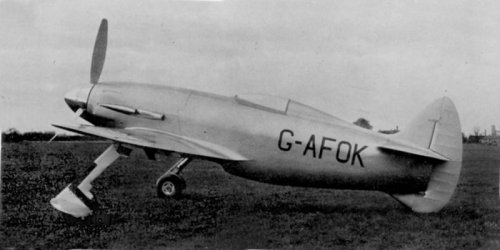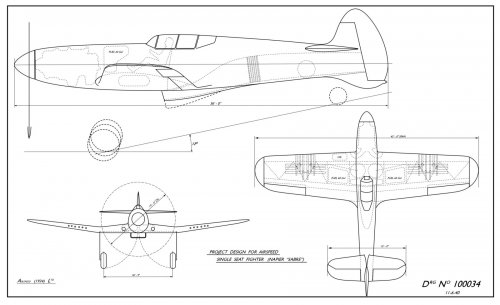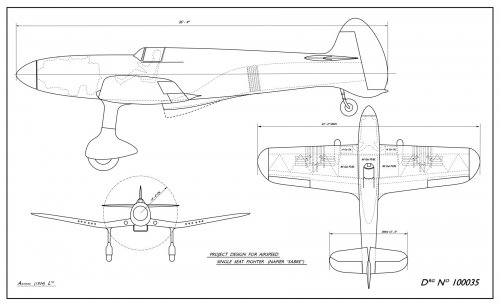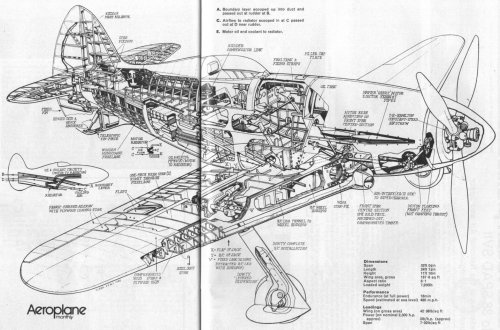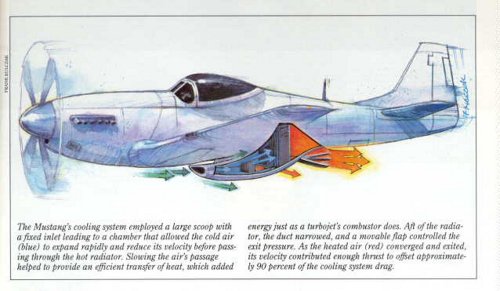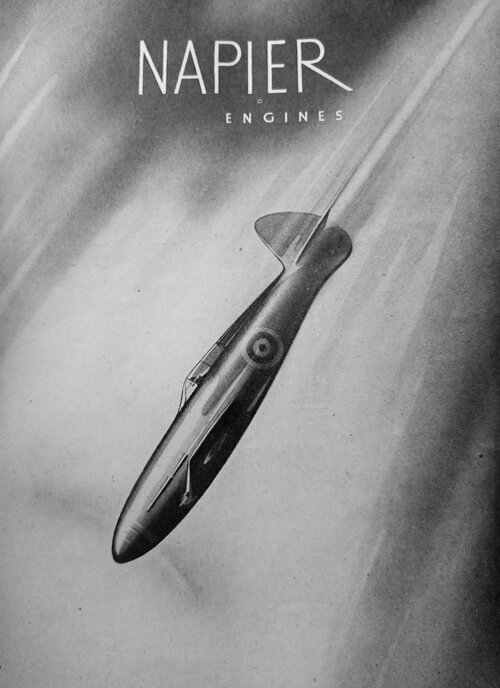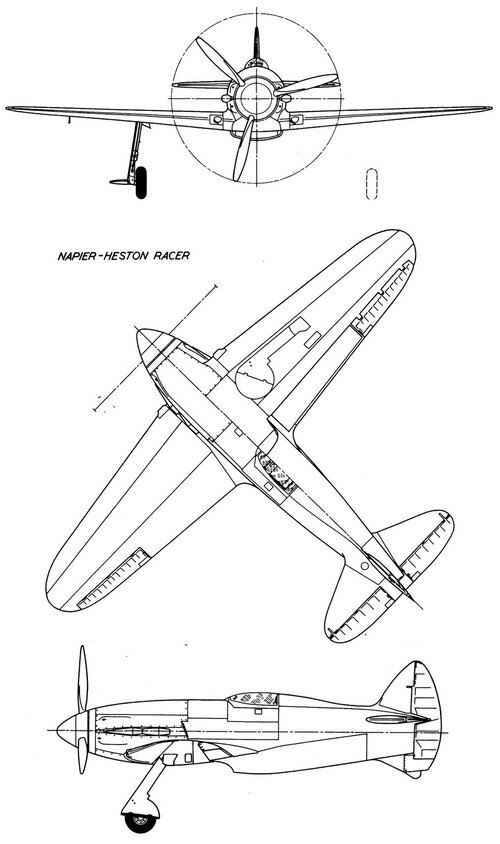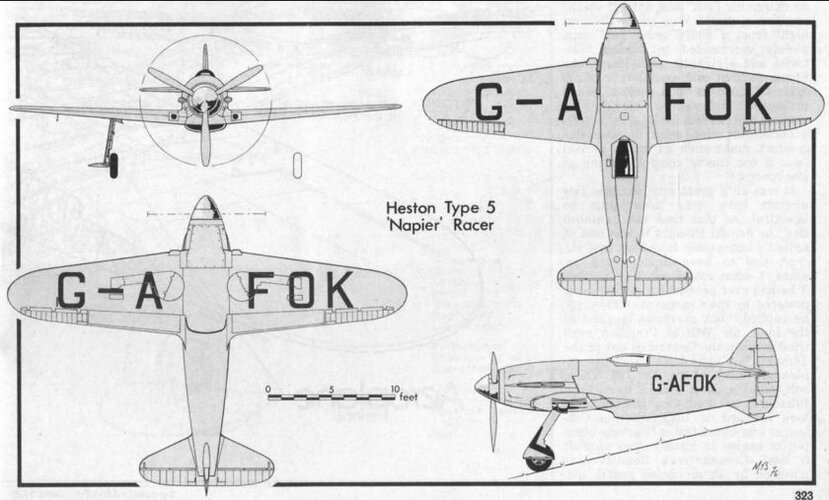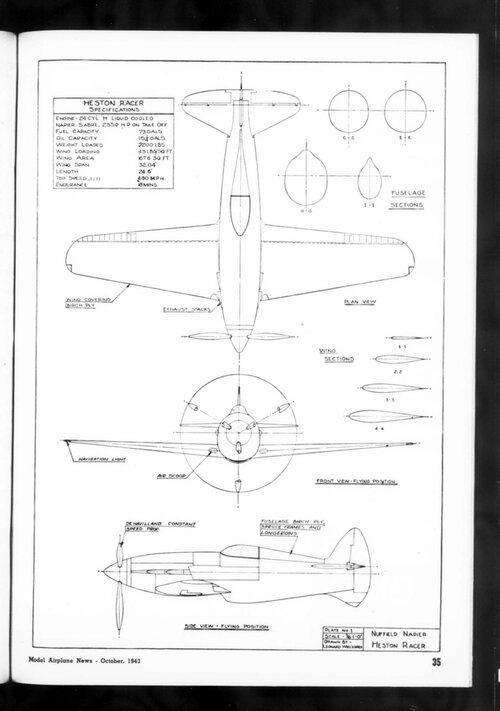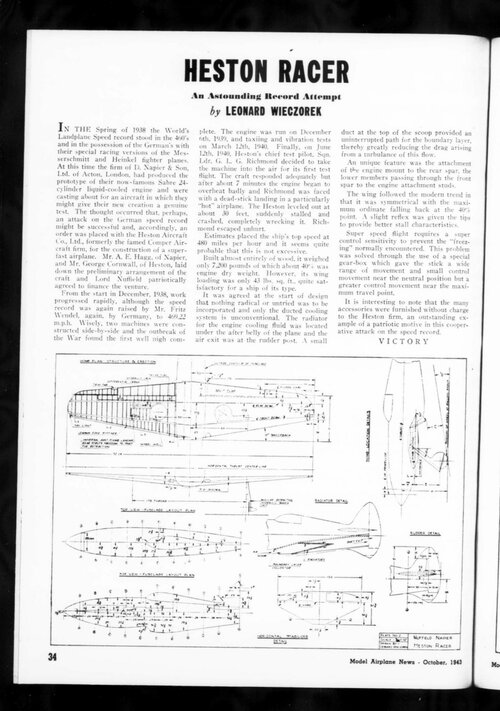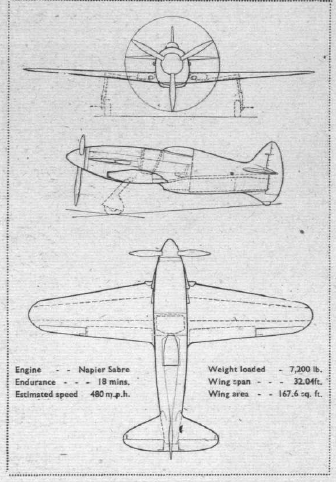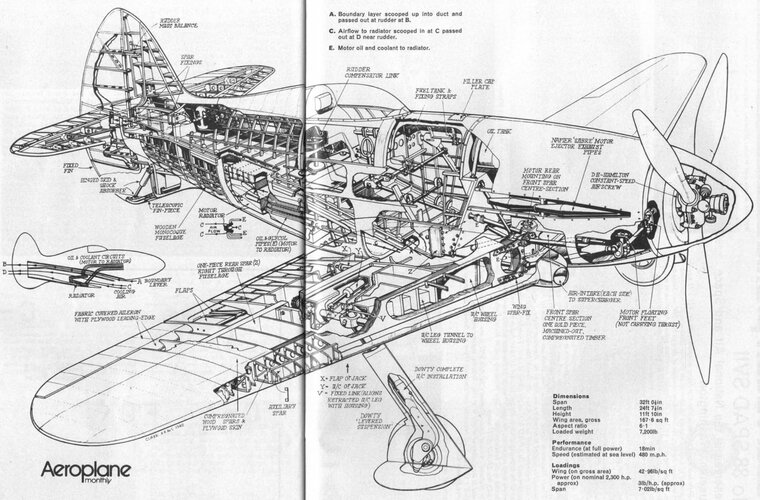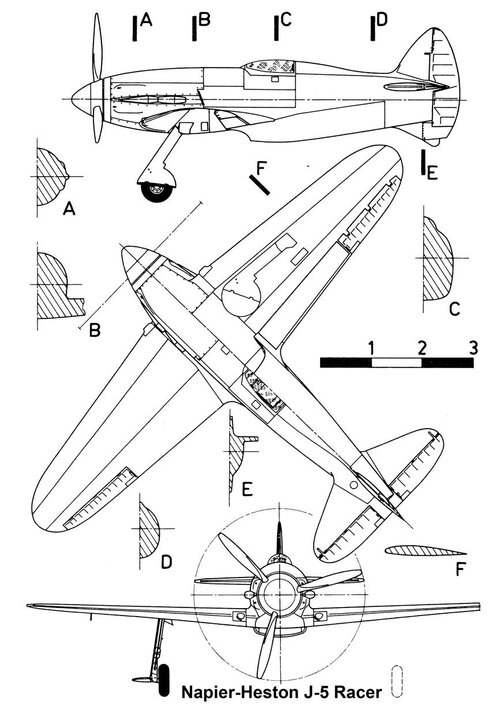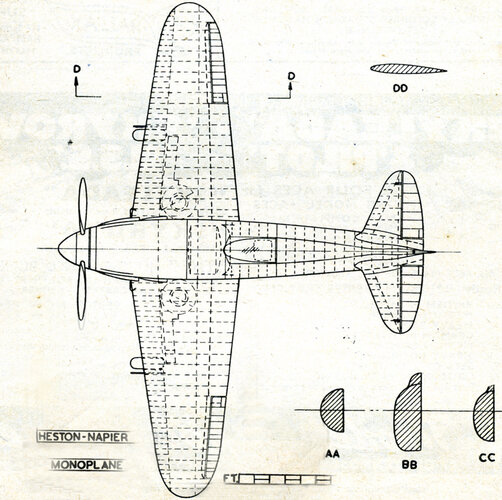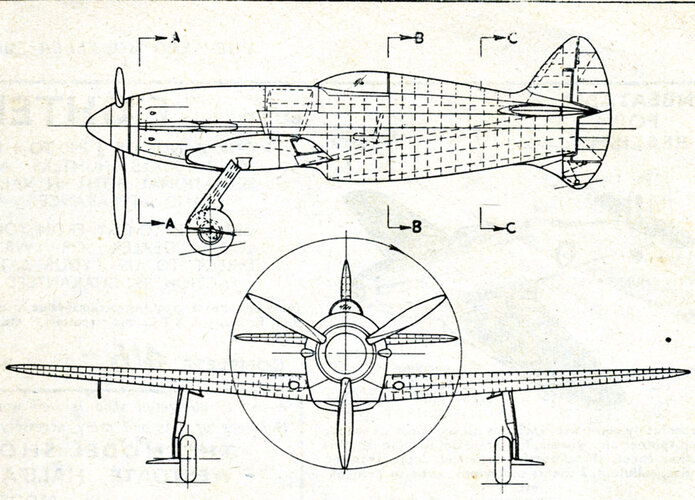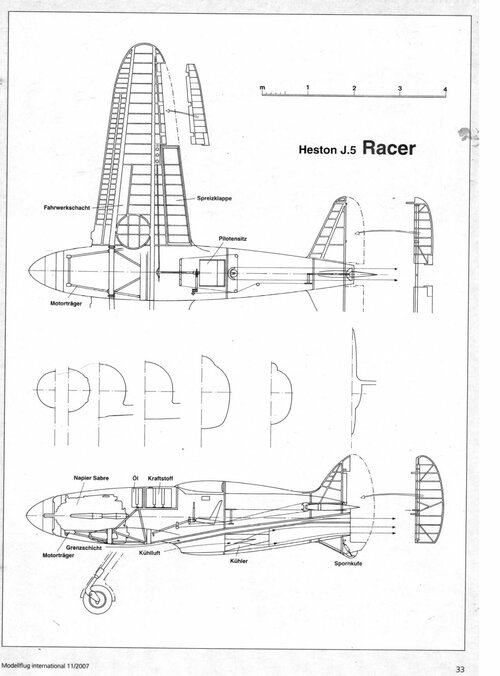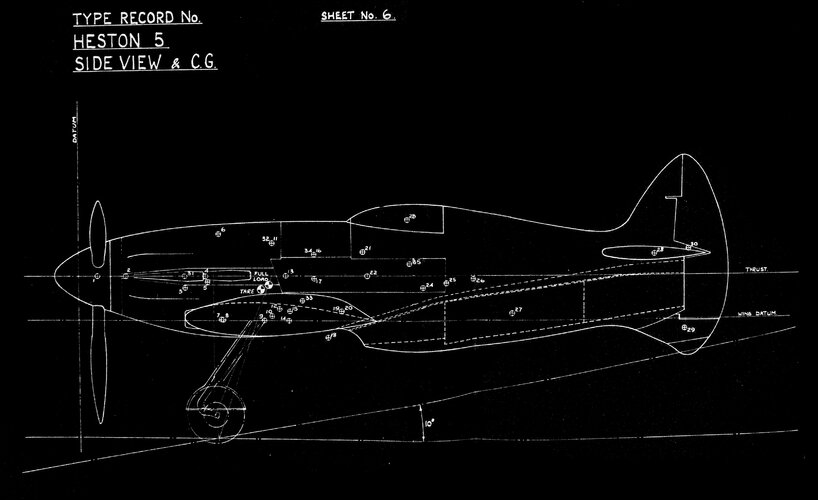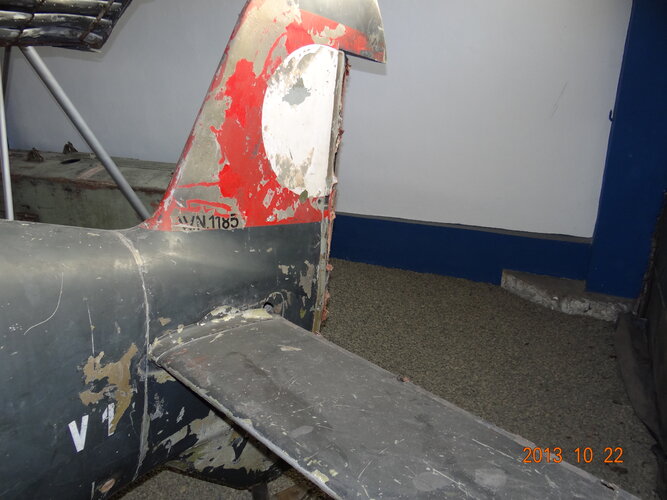- Joined
- 19 October 2012
- Messages
- 1,984
- Reaction score
- 1,941
The Napier Sabre ran on the bench for the first time in January 1938 and was soon delivering in excess of 2000hp. The Air Ministry had already issued fighter specifications for aircraft to be powered by a high-powered engine, such as the Sabre, and a contract was awarded to Hawker for the Typhoon.
Development of the Sabre was slow, however, and while the problems were being addressed Napier decided to use one engine for an attempt at the World airspeed record and asked Arthur Hagg to design a racer specifically for this engine. Hagg had had a long and successful career with de Havilland where he had designed the Moth family, the DH88 Comet racer and the DH91 Albatross airliner before falling out with management and resigning in 1937. The racer was built by the Heston Aircraft Company as the Napier-Heston Racer in 1940. This was a highly promising design but its potential is regrettably unknown as it was wrecked on its first flight after the cooling system was damaged on take-off. Hagg continued to work with Napier advising them on engine installation issues. In 1942 he joined Airspeed (1934) Ltd as chief designer.
Airspeed had worked hard to obtain orders for advanced aircraft; bombers, fighters and airliners, but had failed to achieve success and seemed stuck building Oxfords and other relatively undemanding aircraft. With the arrival of the Sabre they embarked on another attempt, as described below.
Airspeed Aircraft since 1931, H.A.Taylor, Putnam 1970
Other Sabre-engined fighter projects were also worked upon by the Airspeed team, including one with a well-faired fixed undercarriage and cranked wing. Both this and a retractable-undercarriage version had their radiators aft of the cockpit with cooling air ram-fed into an underside scoop and venting through slots in the tail. A verbal order was given officially at one stage to Airspeed for a day fighter which formed the basis for these undesignated projects, using wooden construction as a means of conserving strategic materials. The order was later revoked under pressure, it is believed, from another sector of the aircraft industry.
This work took place in mid-1940, a turbulent time for Airspeed as de Havilland had become the majority shareholder and had placed their own men on the board, which must surely have distracted Hessell Tiltman, part-owner, director and chief designer, from detailed design work. The design of the above two aircraft is likely the work of one of his subordinates, but judging from the obvious similarity to the Napier-Heston Racer, a secret aircraft that had not yet flown, could it be that Hagg had offered advice?
So……..
Development of the Sabre was slow, however, and while the problems were being addressed Napier decided to use one engine for an attempt at the World airspeed record and asked Arthur Hagg to design a racer specifically for this engine. Hagg had had a long and successful career with de Havilland where he had designed the Moth family, the DH88 Comet racer and the DH91 Albatross airliner before falling out with management and resigning in 1937. The racer was built by the Heston Aircraft Company as the Napier-Heston Racer in 1940. This was a highly promising design but its potential is regrettably unknown as it was wrecked on its first flight after the cooling system was damaged on take-off. Hagg continued to work with Napier advising them on engine installation issues. In 1942 he joined Airspeed (1934) Ltd as chief designer.
Airspeed had worked hard to obtain orders for advanced aircraft; bombers, fighters and airliners, but had failed to achieve success and seemed stuck building Oxfords and other relatively undemanding aircraft. With the arrival of the Sabre they embarked on another attempt, as described below.
Airspeed Aircraft since 1931, H.A.Taylor, Putnam 1970
Other Sabre-engined fighter projects were also worked upon by the Airspeed team, including one with a well-faired fixed undercarriage and cranked wing. Both this and a retractable-undercarriage version had their radiators aft of the cockpit with cooling air ram-fed into an underside scoop and venting through slots in the tail. A verbal order was given officially at one stage to Airspeed for a day fighter which formed the basis for these undesignated projects, using wooden construction as a means of conserving strategic materials. The order was later revoked under pressure, it is believed, from another sector of the aircraft industry.
This work took place in mid-1940, a turbulent time for Airspeed as de Havilland had become the majority shareholder and had placed their own men on the board, which must surely have distracted Hessell Tiltman, part-owner, director and chief designer, from detailed design work. The design of the above two aircraft is likely the work of one of his subordinates, but judging from the obvious similarity to the Napier-Heston Racer, a secret aircraft that had not yet flown, could it be that Hagg had offered advice?
So……..

